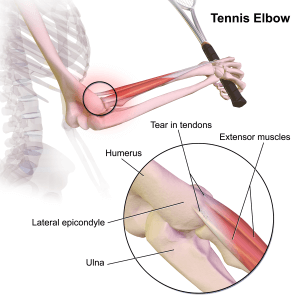Overview
Multiple Sclerosis (MS) is a non-traumatic chronic condition affecting the Central Nervous System (CNS) that affects more than 2.8 million individuals worldwide. These are predominantly young adults ranging between 20 and 40 years, however, very rare cases of pediatric-onset MS have also been reported.
MS is a consequence of the patient’s immune system attacking myelin, the protein and fatty insulating layer that round up nerves in the brain and spine, allowing the electrical impulse to transmit through the nerve cells. Once this layer is damaged, the transmission of the signal is delayed and inefficient, also triggering an inflammatory response and generating temporary lesions of variable size and distribution in the brain white matter.
MS can have different manifestations depending on the severity and ability for the symptoms to relapse. Relapses can occur over a variable time and in most cases, some degree of tissue damage is still observed.
The different types of MS are:
- Relapsing-Remitting MS (RRMS). Also considered as the first stage of the disease, RRMS is characterised by early inflammation.
- Primary Progressive MS (PPMS). This is a non-relapsing-remittent manifestation of the condition, which is characterised by a progressive degeneration.
- Secondary Progressive MS (SPMS). This is a more advanced, usually non-relapsing-remittent phase of the disease, marked by the presence of extensive lesions in the white matter.
- Progressive-Relapsing MS (PRMS): this is a rare form affecting less than 5% of the MS cases, and is characterised by a steadily progression with worsening of the symptoms and no possibilities of remission.
Signs and Symptoms
The progression, severity and presentation of MS signs and symptoms can vary greatly among patients; nevertheless, the most common presentation includes:
- Lack of coordination and walking difficulties (e.g. spasticity, ataxia, tremors, dysarthria).
- Vision problems (e.g. diplopia, nystagmus).
- Autonomic dysfunctions to multiple organs.
- Speech and cognitive impairements.
- Fatigue.
- Acute or chronic pain, including epileptic seizures.
Causes and Risk Factors
The underlying causes of MS remain unclear but a complex genetic-environmental interaction has been shown to play a crucial role in the pathophysiology of this condition, with the environmental component being stronger than the genetic one. Despite recent studies have also suggested an involvement of the peripheral nervous system (PNS), the demyelination of the nerve fibres in MS patients occurs predominantly in the CNS. The autologous attack of myelin from the immune cells (T – and B – lymphocytes) can be recovered; however, long-term damages in the form of scar tissues can persist leading to neurological impairment due to the inability of the electrical impulses to be efficiently transmitted across the body.
Environmental factors triggering MS include vitamin D deficiency, UVB exposure, smoking, childhood obesity, Epstein-Barr virus infections, toxin overload may also increase patients’ genetic susceptibility for MS. The condition has also been reported to have increased incidence in females compared to males (3:1 ratio) and the presence of comorbidities (especially other auto-immune diseases) and family history for MS (especially associated with the human leukocyte antigen HLA-DRB1*15:01 haplotype) are associated with enhanced risk.
Diagnosis
Neurological exams for MS are initially performed on the basis of the clinical symptoms, followed by a diagnostic examination using Magnetic Resonance Imaging (MRI) and histological examination of the cerebrospinal fluid (CSF). Depending on the manifestation of the disease, the medical specialist will prescribe a medical imaging test of the brain, the spine, or both. This exam enables confirmation of the diagnosis and establishing of a prognosis that is based upon the extension of the lesion, also excluding incidental findings for other conditions with similar symptomatology.
The pathological hallmark of multiple sclerosis is the presence of multiple areas of myelin loss (lesions or plaques) in the CNS, accompanied by perivascular infiltrates of lymphocytes (active MS) or microglia and macrocytes (advanced MS). The axonal density is initially preserved in the first phases of the condition, however, the presence of chronic inflammation leads to irreversible axon damage, myelin breakdown and oligodendrocyte injury.
Treatment
Despite the extensive interest and effort in treating MS, currently, no FDA-approved cure is available. Nevertheless, various treatments aiming to manage the symptomatology and improve patients’ daily quality of life have been cleared and used worldwide. The optimal therapeutic approach often needs to be personalised based upon the type of MS and the range and severity of the symptoms manifested at the time of the examination. These include disease-modifying therapies (DMTs), such as interferon beta-1a and 1-b, glatiramer acetate (GA), mitoxantrone, natalizumab, fingolimod, teriflunomide, dimethyl fumarate, and alemtuzumab. DMTs modulate the immune system with different mechanisms of action and have been proven effective, although with a variable degree and tolerability, for relapsing MS; however, no beneficial effect has been registered for progressive MS.
In most cases of advanced MS, symptomatic therapies, such as Dalfampridine, aiming to alleviate some of the most debilitating symptoms such as spasticity and walking difficulties are prescribed and have been proven effective to manage the disease.
Further understanding of the pathophysiology of MS alongside new methods for drug development have been progressively advancing this field of research bringing hope to patients affected by chronic and advanced MS.
https://onlinelibrary.wiley.com/doi/full/10.1111/ene.13819
https://pubmed.ncbi.nlm.nih.gov/27572865/
https://www.ncbi.nlm.nih.gov/pmc/articles/PMC3915566/
https://www.ncbi.nlm.nih.gov/pmc/articles/PMC3351877/
https://journals.sagepub.com/doi/full/10.1177/1352458520970841
https://www.ncbi.nlm.nih.gov/pmc/articles/PMC6613429/
https://www.ncbi.nlm.nih.gov/pmc/articles/PMC4517331/
The content shared on the Health Literacy Hub website is provided for informational purposes only and it is not intended to replace advice, diagnosis, or treatment offered by qualified medical professionals in your State or Country. Readers are encouraged to confirm the information provided with other sources and to seek the advice of a qualified medical practitioner with any question they may have regarding their health. The Health Literacy Hub is not liable for any direct or indirect consequence arising from the application of the material provided.



